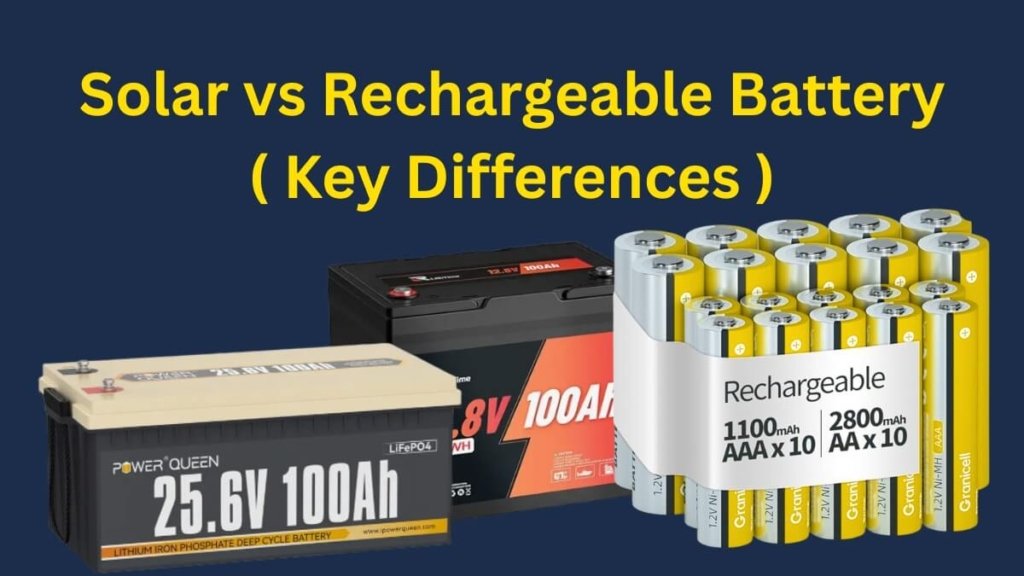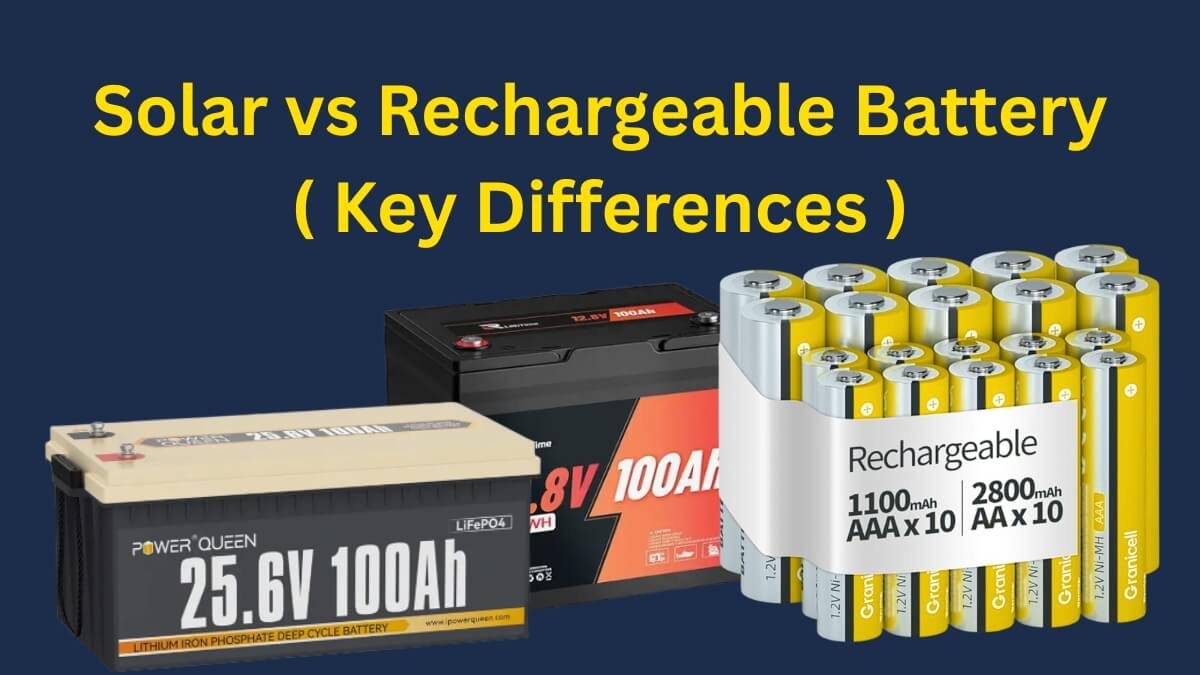When people first ask me about renewable energy storage, one of the most common questions I hear is this: “What’s the real difference between solar and rechargeable battery?” At first glance, they sound similar. After all, both can be recharged and reused. But once I dug into their specs, tested some setups, and talked to homeowners, I learned the differences are critical—especially if you’re thinking about solar power for your home or everyday devices.
What Is a Rechargeable Battery?
A rechargeable battery is any battery designed to be reused by charging it with electricity from the grid, a USB port, or another power source. Common types include:
- Lithium-ion (Li-ion): Found in phones, laptops, and EVs.
- Nickel-Metal Hydride (NiMH): Popular in AA/AAA household packs.
- Lead-Acid: Used in cars and backup systems.
These batteries are cost-effective, lightweight, and perfect for portable devices. However, they aren’t built to store large amounts of energy for an entire household.
What Is a Solar Battery?
A solar battery is specifically engineered to store excess power from solar panels for later use. It acts as a backup system when the sun isn’t shining—like at night or on cloudy days.
Popular types of solar batteries include:
- Lithium-Iron Phosphate (LiFePO4): Known for safety and long lifespan.
- Lead-Acid Deep Cycle: Affordable but bulkier, often used off-grid.
- Saltwater Batteries: Eco-friendly option, though less common.
Solar batteries are larger, more durable, and built for high-capacity energy storage. They often integrate with smart home systems to optimize energy use.

Core Difference Between Solar and Rechargeable Battery Systems
Here’s a side-by-side breakdown that makes the difference crystal clear:
| Feature | Rechargeable Battery | Solar Battery |
|---|---|---|
| Primary Purpose | Power small devices (phones, cameras, toys) | Store solar energy for homes or businesses |
| Charging Source | Grid electricity, USB, or adapters | Directly from solar panels |
| Capacity | Low to medium (mAh range) | High (kWh range, enough for appliances & backup) |
| Durability | Moderate (500–1,000 cycles) | High (3,000–6,000+ cycles depending on type) |
| Cost | Affordable ($10–$200 depending on size) | Higher investment ($5,000–$15,000+ for home systems) |
| Application | Everyday gadgets | Renewable energy storage, off-grid living, backup power |
Pros and Cons
Rechargeable Batteries
✅ Affordable and widely available
✅ Perfect for small electronics
❌ Not designed for large-scale energy storage
❌ Shorter lifespan compared to solar batteries
Solar Batteries
✅ Essential for maximizing solar energy use
✅ Long lifespan and eco-friendly
✅ Provides backup power during outages
❌ Higher upfront cost
❌ Requires professional installation
Common Questions & Answers
Can a solar battery also be rechargeable?
Yes. All solar batteries are rechargeable, but not all rechargeable batteries are designed to work with solar systems.
Which is more cost-effective for home use?
For everyday electronics, rechargeable batteries win. For whole-home or off-grid solar, solar batteries are the only long-term solution.
Do solar batteries last longer?
Generally, yes. High-quality solar batteries can last 10–15 years, while small rechargeable packs typically last 2–5 years.
Learn: Are Solar Rechargeable Batteries Different or Not?
In Summery!
The difference between solar and rechargeable battery really comes down to scale and purpose. If you need quick, affordable power for small electronics, rechargeable batteries are a smart choice. But if you’re investing in solar energy for your home or business, solar batteries are the backbone of true energy independence.
👉 My takeaway: Rechargeable batteries are for convenience. Solar batteries are for freedom.


